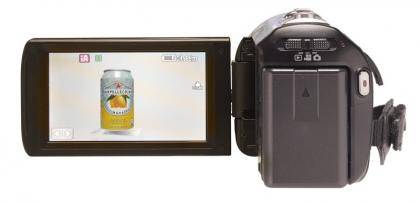Like its predecessor, the Panasonic HDC-SD900 , the Panasonic HC-X900 is a full HD camcorder has three separate sensors for red, green and blue light; these help it capture more accurate colours and more detail, while reducing noise, compared to single-chip camcorders. The camera supports 1080/50p video as well as 1080i and PAL. The new model adds updated image stabilisation and an auto-stereoscopic screen for glasses-free 3D viewing with the optional 3D adaptor.

It’s a medium-sized camcorder which feels well-balanced in your hand, and all the major controls, such as zoom and record, are within easy reach of your fingers. You can either view the action using the flip-out resistive touchscreen or you can use the electronic viewfinder. Even though we’re now used to super-sensitive capacitive screens, the HC-X900’s resistive model is still responsive and it's easy to select the function you need. The touchscreen makes it easy to preview your footage, as it's uncluttered by too much information. There's also an electronic viewfinder for if you have trouble using the screen in direct sunlight.
The HC-X900's three 1/4.1in sensors deliver fantastic video in daylight, but footage does suffer from noticeable noise in darker environments, as was the case with the HDC-SD900. In good lighting, the three colour sensors capture scenes accurately, and even when surveying a panoramic scene, such as that from our rooftop, objects to the extreme left and right of the screen retain their colour and definition.

The camcorder's sensor specifications are identical to those of the previous-generation HDC-SD900, but the camera does add 'pixel shift technology', where the green sensor is slightly offset relative to the red and blue, which helps the sensor to capture four pixels instead of one each frame. This, Panasonic claims, means the camera captures four times the pixel count of Full HD so has more information to use when processing the final video image, leading to greater accuracy. Even so, it isn’t greatly different from that captured by the HDC-SD900. Brighter colours look slightly more natural, but when they’re compared to footage captured by the HDC-SD900 last year, the difference isn’t overwhelming.